Heath aster, an herbaceous perennial from the Asteraceae family, is well-known for its resilience and adaptability. Native to Central and Eastern United States, as well as parts of Canada and Mexico, this hardy plant thrives across USDA zones 3 to 10. It flourishes in full sun and dry, well-drained soil, making it a low-maintenance choice for gardeners.
One notable characteristic of heath aster is its vigorous growth. The plant spreads both through rhizomes and self-seeding, often covering 30 cm or more per year. While prized for its dense clusters of small, white flowers that bloom in late summer and fall, its rapid spread can make it invasive in some settings. Proper care and regular monitoring can help maintain its growth within desired boundaries.
| Common name | Heath Aster, White Aster, White Heath Aster |
| Botanical name | Aster ericoides |
| Family | Asteraceae |
| Species | ericoides |
| Origin | Central and Eastern United States, Canada to Mexico |
| Life cycle | Perennial |
| Plant type | Herbaceous Perennial |
| Hardiness zone | 3, 4, 5, 6, 7, 8, 9, 10 |
| Sunlight | Full Sun |
| Maintenance | Low |
| Soil condition | Loam |
| Soil ph | Acid |
| Drainage | Well-Drained |
| Spacing | 12 in. – 3 ft. |
| Flowering period | Fall |
| Height | 1 ft. – 3 ft. |
| Flower color | Gold, Yellow |
| Leaf color | Green |
| Stem color | Brown, Copper |
| Fruit type | Achene |
| Flower benefit | Good Cut |
| Garden style | Butterfly Garden |
| Uses | Walkways |
I. Appearance and Characteristics
Symphyotrichum ericoides (formerly Aster ericoides), known as white heath aster, frost aster, or heath aster, is a species of flowering plant in the family Asteraceae native to much of central and eastern North America. It has been introduced to parts of Europe and western Asia.
The naturally-occurring hybrid species of white heath aster and New England aster (Symphyotrichum novae-angliae) is named Symphyotrichum × amethystinum and is commonly known as amethyst aster. It can grow where the two parents are in close proximity.
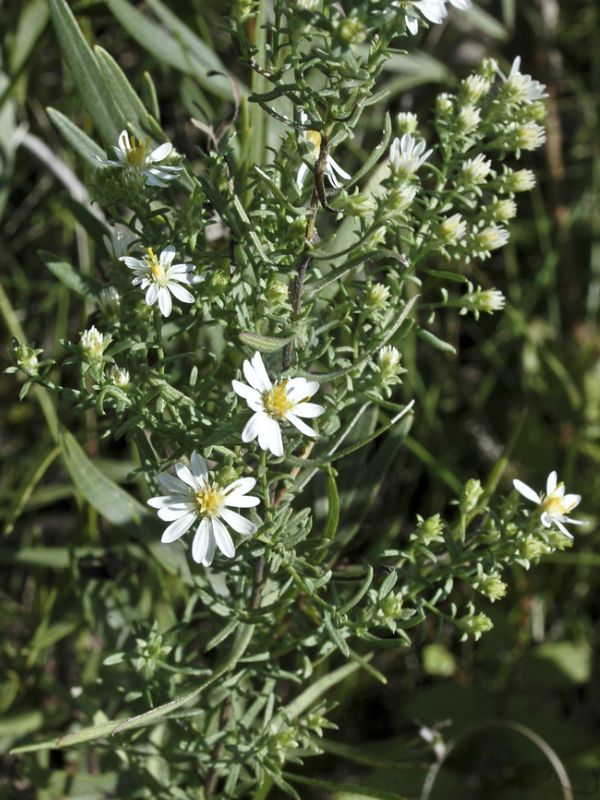
Heath aster is a perennial herbaceous plant with stems from 30 to 91 centimeters (1 to 3 feet) tall. Its leaves are sessile (stalkless) and narrow, becoming smaller towards the top of the plant and tips of the branching stem. It has white (rarely pinkish), composite flowerheads with yellow centers that begin flowering in late summer and last through fall. They are 8 to 10 millimeters (1⁄3 to 1⁄2 inch) across.
It is commonly confused with Symphyotrichum pilosum, which co-occurs throughout most of its range. S. pilosum has larger flowerheads with longer ray petals. The phyllaries on S. pilosum are spine-tipped, while those of S. ericoides are not, although the curled edges may make them appear to be.
II. How to Grow and Care
Sunlight
Plants should be placed in an area in full sun or perhaps partial shade and young plants should be spaced 30cm apart. If placed in a shaded area where the air becomes stagnant, your plants will suffer.
Temperature
Aster ericoides is a sun-loving plant that enjoys temperatures of 80-90 °F (27-32°C). As an outdoor perennial, it will tolerate cooler spells but will not thrive until temperatures rise again.
If you want to protect your plants over winter, you can supply an extra layer of compost in late fall to help protect them from frost.
This will benefit them by giving a boost at the start of the next growing season but is not essential. Remember, Aster ericoides grow readily on roadsides so it will survive harsh conditions unaided.
Humidity
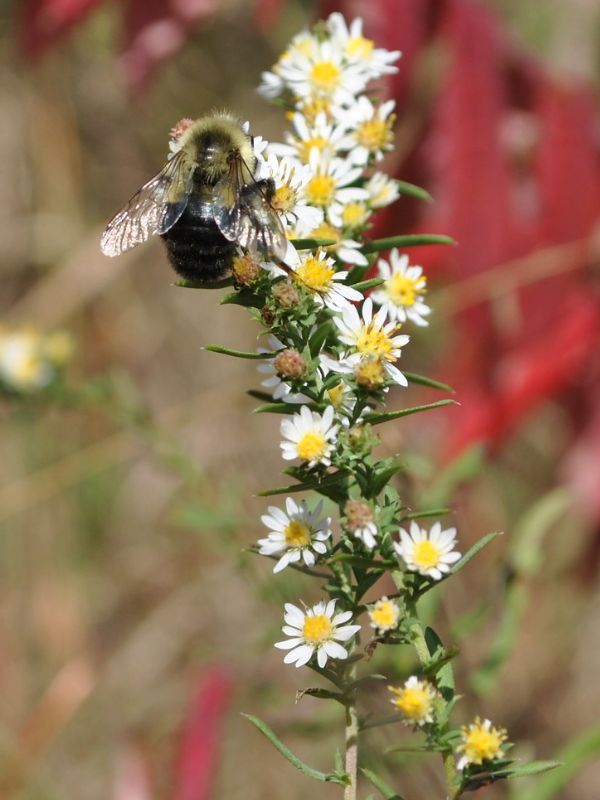
Aster ericoides will cope with usual humidity fluctuations. If you live in an area that gets particularly high or low levels of humidity you may find that it doesn’t grow so well, but generally speaking, this is a plant that will not be adversely affected by humidity levels
Watering
Originating from North America’s prairies, white heath aster thrives in well-drained soils and can tolerate periods of drought due to its native arid conditions. This resilience translates into a preference for moderate watering, with a routine of watering every week being sufficient to maintain its health. As an outdoor plant often found gracing open fields, white heath aster is adept at managing water through its extensive root system, making it ideal for regions where rainfall is unpredictable.
Fertilizing
To thrive, white heath aster requires balanced nutrition fertilizer. Apply a diluted solution once monthly during active growth, reducing to quarterly in dormancy. The optimal ratio is 10-10-10 NPK, ensuring robust growth and prolific blooms. Use sparingly to avoid root burn, adhering to the product’s instructions. Seasonal adjustments enhance nutrient uptake, respecting white heath aster’s natural cycle. Always water white heath aster before fertilizing to protect its delicate root system. This targeted feeding regimen bolsters health, vitality, and flower production.
Propagation
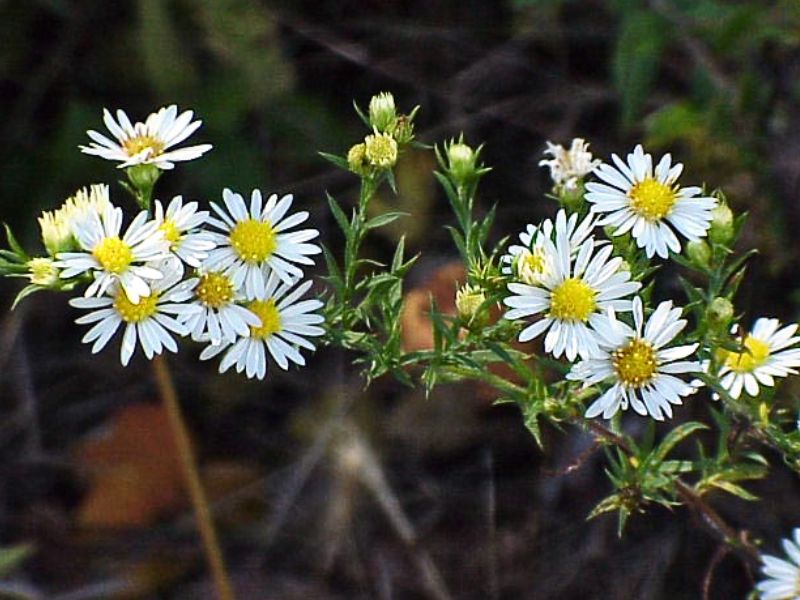
Aster ericoides will spread naturally to form clumps. It does this by growing new plants from rhizomes which is why it is good for ground cover.
Properly cared for, it will produce high volumes of flowers, and the seeds are pollinated by the vast numbers of insects attracted to it.
Due to these two highly effective methods of propagation, Aster ericoides is ideal for wildlife gardens and cottage gardens.
But this can also be a curse as you can find this plant cropping up in areas of your garden where you don’t want it.
To keep your plants in optimum health, it’s advisable to divide them every three years. The division should ideally be done in late fall after your plants have stopped flowering, but it can also be done in early spring if necessary.
To divide the plants, take a clean, sharp knife and separate them at the root. Take 5-8cm of root and remove it with a smooth cut.
Once you have your ‘new’ plant, most of the foliage should be removed. Leave a few inches (centimeters) of the stem but no more than that.
You want the plant to concentrate its energy on establishing strong roots. If this is successful, a strong, healthy plant will follow.
The cutting can then be replanted in another area. This will help to rejuvenate your plants and encourage healthy blooms.
If you choose to grow Aster ericoides from seed, you can do so by collecting seeds at the end of its flowering season when you deadhead your plant.
Alternatively, you can buy seeds from most gardening centers.
For best results, sow indoors in trays. Place the seeds 0.5cm deep in compost and keep them warm. The ideal temperature is between 60-68°F (16-20°C) and this can often be achieved by placing the trays on a windowsill where they will get plenty of sunlight.
Make sure you keep the compost moist but not sodden. Seedlings should begin to appear within 14-21 days.
Once the seeds are germinated, you can move them to a cooler position but it’s important to make sure they still get plenty of sunlight.
When the seedlings are large enough to handle, transfer them to pots and then harden them off before planting out.
Hardening off usually takes 2-3 weeks and as Aster ericoides are hardy plants, your seedlings should be ok to plant after around 2 weeks.
Seedlings sown indoors must be hardened off to acclimatize before they are transferred to the garden.
Hardening off changes the leaf structure of the plant to make it more able to deal with the extremes of weather it will be subjected to once outside.
This process is done in stages. First of all, the seedlings should be moved to a cooler area of the home. After a few days, you can begin to place your pots outside during the day.
At the start of the second week, provided there is no risk of frost, your plants can be left outside, covered, overnight.
Towards the end of the second week, you can leave them out overnight without a covering. If they display no adverse effects to being left out, they can then be transferred to their bed or border after 3-4 nights.
When planting out, space your seedlings around 30cm apart.
If sowing directly outside, make sure you wait until the last frost has gone, then sow seeds into well prepared, loose soil which contains a good dose of organic matter and has already been watered.
Seeds should be sown at a depth of around 0.2 inches (0.5cm). Once seedlings are large enough to handle, thin them out leaving 12 inches (30cm) between each one. New plants should flower in their second or third year.
Transplanting
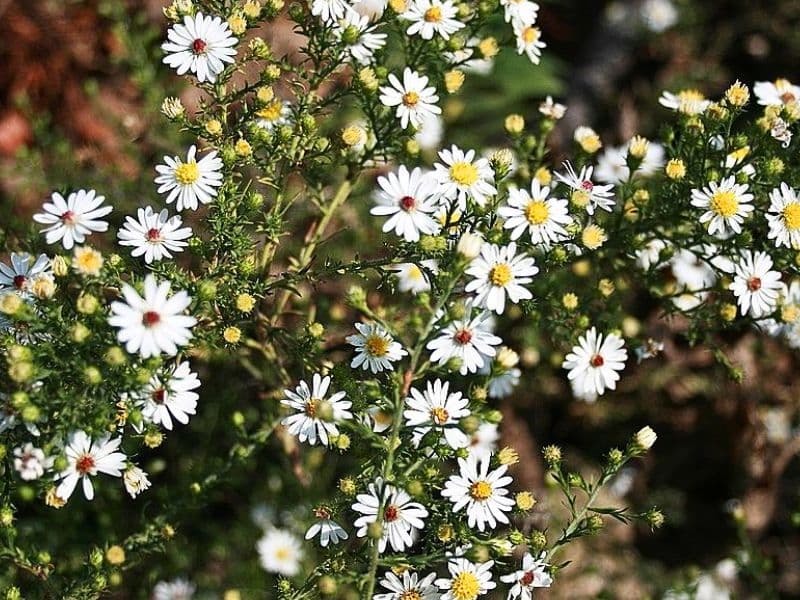
The optimal time to transplant white heath aster is in the S1-S2 period, when the plant’s growth is in recess. This allows the plant to establish itself before spring or summer. Choose a location that receives full to part sun. Avoid waterlogged areas and remember, during the first year after transplanting, maintain adequate soil moisture to help the roots establish.
Repotting
White heath aster thrives as a bushy plant with fine texture, and requires repotting every 2-3 years to accommodate robust growth. Repot in early spring, before the growing season. A medium-sized pot with drainage holes is ideal. Post-repotting, ensure it receives well-draining soil and consistent moisture as it establishes. Friendly reminder: patience is key! Gentle post-care ensures a healthy, lush shrub.
Pests and Diseases
Aster ericoides is a hardy plant that is not generally susceptible to pests and diseases. Your choice of location is key to giving your plants the chance to thrive as they would in their natural habitat.
If they are placed in an area where they would not naturally flourish, Aster ericoides can suffer.
Most Aster plant diseases are mainly superficial, but left untreated they can lead to further problems.
Common problems are rust and powdery mildew which can be treated with fungicide available from any garden center.
More serious diseases are root rot, wilt, footrot, and botrytis blight. All of these are a result of the soil being too wet.
This can be avoided by making sure the soil is well-drained and that your Aster ericoides are planted in full sun. When it comes to watering, less is more. Aster ericoides will cope with drought far better than it will with sodden soil.
Pests such as spider mites and lace bugs can also cause problems. It is unlikely that they will kill the plant, but they can cause an unhealthy appearance.
To avoid insect infestations, keep the leaves dry and weed regularly until the Aster ericoides have covered the ground naturally. Infestations can be dealt with using any standard insecticide.
III. Uses and Benefits
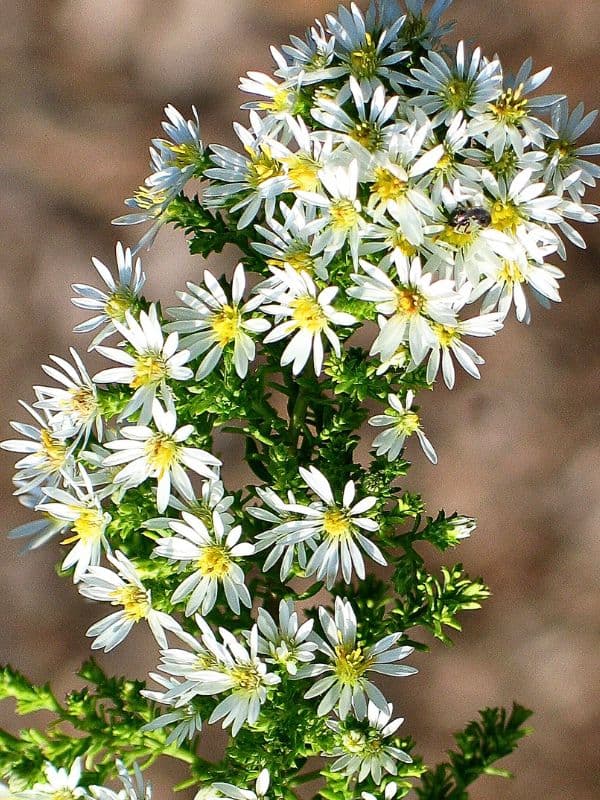
- Ornamental uses
White heath aster is used in gardens as an ornamental or a ground cover. It is often chosen for the beauty of its flowers, its versatility and adaptability, and its resistance to drought. It is most commonly used in mixed borders and flowerbeds.
- Medicinal uses
Symphyotrichum ericoides has been used for medicinal purposes among indigenous people in North America. It has been documented that the Meskwaki have used the plant both to revive an unconscious person and in a sweatbath as an herbal steam.
Find Where to Buy the Best White Heath Aster (Aster ericoides)

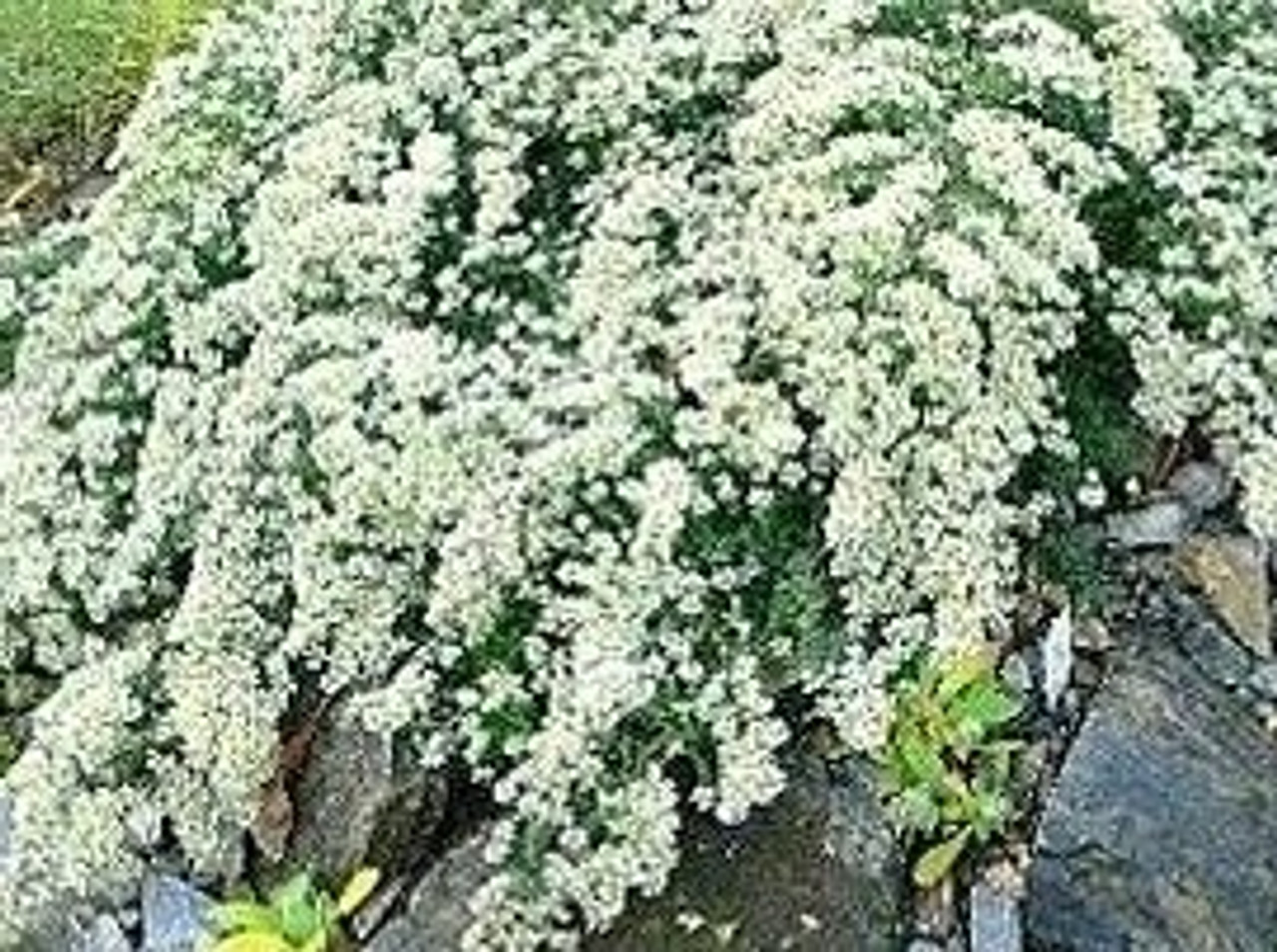




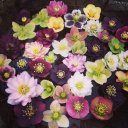


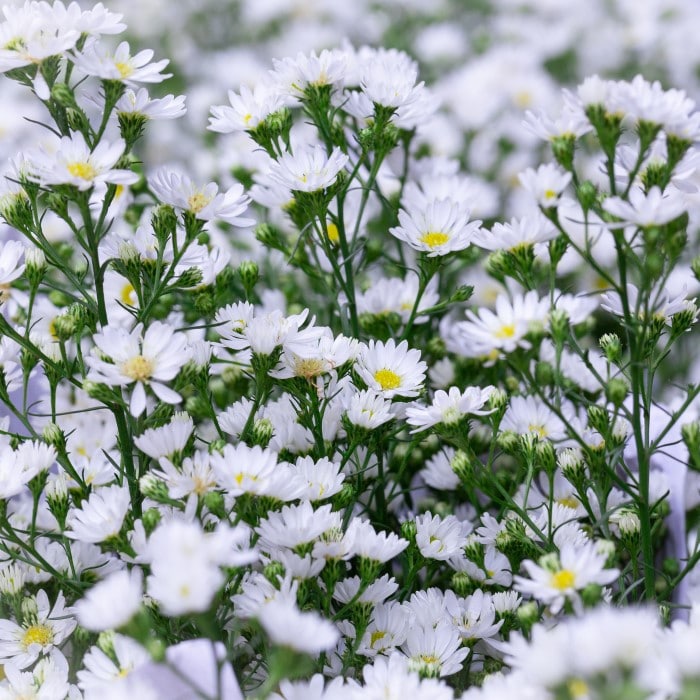








Leave a Reply